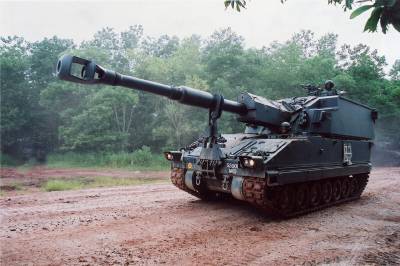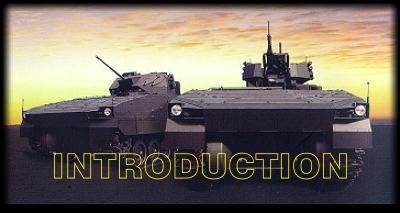Bang on
Target
SAF's new artillery guns prove a big hit in NZ
live-firing exercise, but it took 2 1/2 years of tests and 2,000 shells to
get them there
THE army's newest artillery guns went into action for the first time this week with a battalion of gunners in a live-firing exercise in New Zealand.
Components had to be redesigned after initial tests, said Mr. Koh.
But before full-time national servicemen from the 21st Battalion Singapore Artillery (21 SA) fired the six Primus 155mm self-propelled howitzer guns, the weapon had to be put through stringent tests to prove that it would be bang on target.
It was driven across 5,000km of terrain, from desert ground and steep slopes in South Africa to muddy tracks near Pasir Laba Camp here to test its durability. More than 2,000 shells were also fired over 2 1/2 years.
The big guns proved their worth this week in Exercise Thunder Warrior at New Zealand's Waiouru live-firing range.
Looking more like a tank, as it moves on tracks and has its gun mounted in an
armored turret, Primus is the Singapore Armed Forces' (SAF) first self-propelled heavy artillery gun.
|

Courtesy
of ST Kinetics
|
 It was developed jointly by a team from the SAF, the Defence Science & Technology Agency (DSTA), the national authority on military procurements, and Singapore Technologies Kinetics, a local weapons company.
DSTA Programme manager for the Primus, Mr Koh Weng Kin, 43, said they had to convince the SAF that the new design worked, could endure the
rigors of the battlefield, would not pose a maintenance nightmare and, most importantly, was safe to fire.
After ditching the idea to mount the big gun on the modified chassis of existing
armored vehicles, as these would end up being too heavy for use on local terrain, the team came up with a prototype vehicle in April 2000.
Having only one prototype meant that every problem, no matter how small, had to be identified and solved, sometimes using computer simulations, before proceeding to field testing. It was developed jointly by a team from the SAF, the Defence Science & Technology Agency (DSTA), the national authority on military procurements, and Singapore Technologies Kinetics, a local weapons company.
DSTA Programme manager for the Primus, Mr Koh Weng Kin, 43, said they had to convince the SAF that the new design worked, could endure the
rigors of the battlefield, would not pose a maintenance nightmare and, most importantly, was safe to fire.
After ditching the idea to mount the big gun on the modified chassis of existing
armored vehicles, as these would end up being too heavy for use on local terrain, the team came up with a prototype vehicle in April 2000.
Having only one prototype meant that every problem, no matter how small, had to be identified and solved, sometimes using computer simulations, before proceeding to field testing.
Things did not always go as planned, especially when the first shells were fired, said Mr
Koh. 'We came back with a long list of failures and had to change the design of some components.'
Captain Dinesh Vasu Dash, 29, weapons staff officer from Headquarters Artillery, explained that changes had to be made to the components used in a motor-driven conveyor system which moves 22 shells, each weighing more than 40kg, from their storage racks into the gun.
Size also mattered. As the SAF wanted the vehicle to be about 3m wide, the team had to size the components as small as possible to fit the turret. 'But from the third firing onward, it was smooth sailing,' said Mr
Koh.
In between firing trials, the 28.3-tonne vehicle was put through some mundane tasks.
'We filled up the fuel tank to the brim and ran it until it was dry to see how many
kilometers we could achieve.'
The trials took place in a vast, arid desert range in South Africa, where summer temperatures soared past 40 deg C, sapping the endurance of engineers. When winter arrived, sub-zero temperatures were common.
Said Mr Koh: 'We spent a lot of money flying the gun out so we wanted to maximize
the time there. We made sure the mechanical systems did not crack under the firing stress.'
As the gun was new, more than 1,700 rounds were fired without anyone in the vehicle's turret for safety reasons. The engineers attached a long rope to the firing lever in the turret, yanking it from a safe distance outside the turret to fire the gun.
It was a big day for the team, when a crew was finally allowed in the turret to fire the gun, said Mr Koh. 'It was people from ST Kinetics and DSTA inside... It showed we were almost there.'
Another 300 rounds were fired by the engineers before the weapon was introduced to Singapore Artillery gunners. In September 2002, the Primus prototype was officially certified to have met SAF requirements.
Said Staff Sergeant Dorairaj, 27, a battery sergeant major with the 21 SA: 'The gun's maker had its general manager go inside to fire first.
'He came out alive, so that boosted our confidence,' he added with a laugh.
Read  the Primus Specification here.
the Primus Specification here. |

